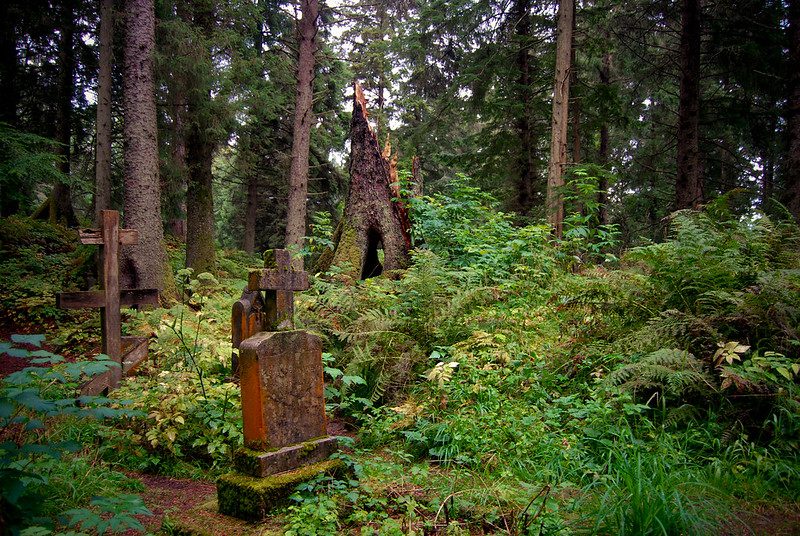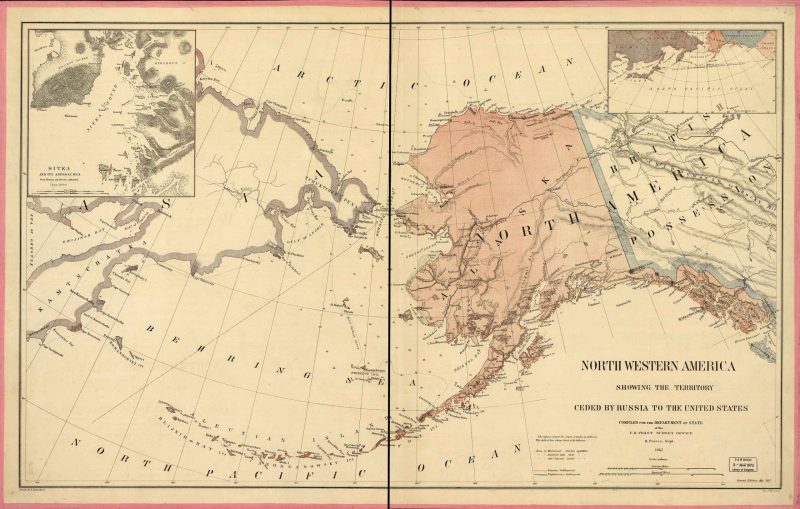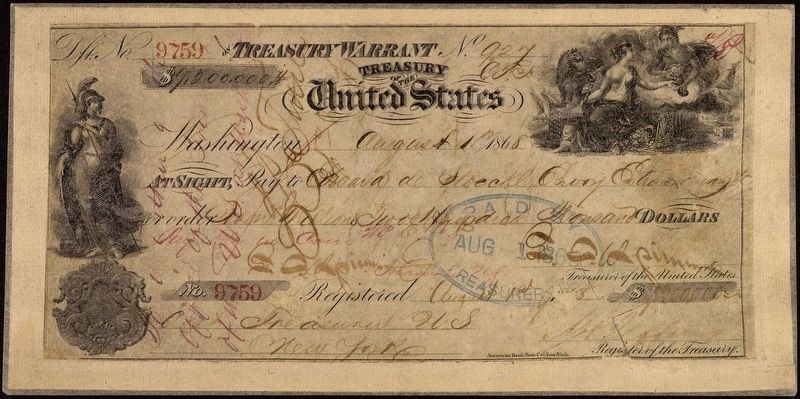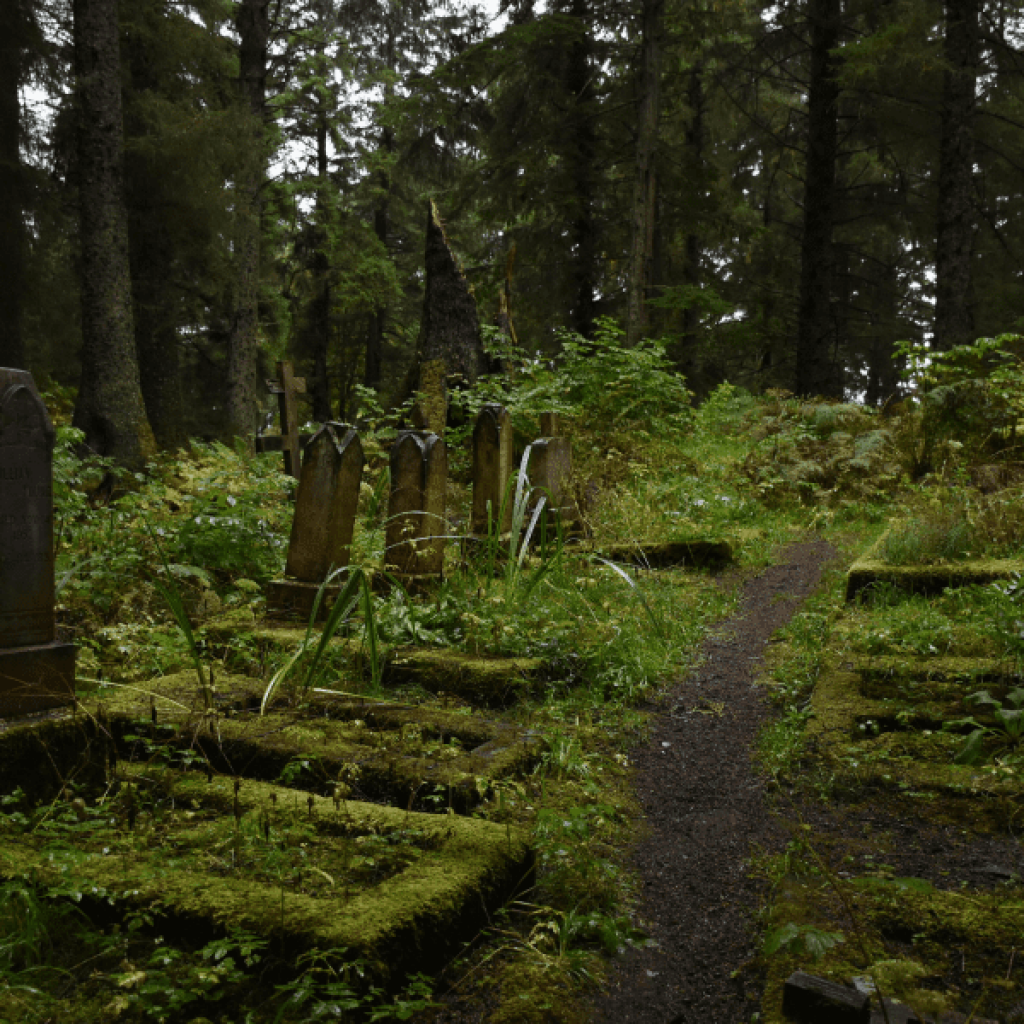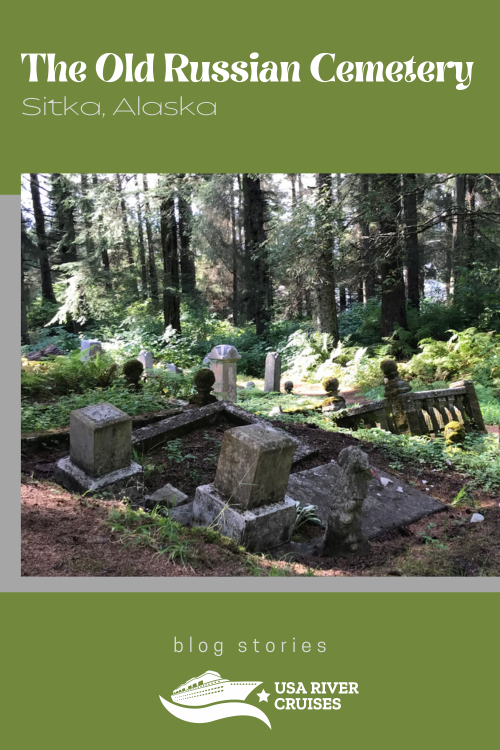
Sitka, Alaska
By Dawn Woolcott
In the center of Sitka, a peaceful oasis lost in time awaits. Cemeteries can be melancholy or a place of great spirit. The Old Russian Orthodox cemetery is both.
Over 200 years old, the cemetery has seen rough days. Harsh weather, nature’s natural inclination to take over, sad acts of vandalism, and earthquakes, all combine to rush the cemetery’s trek into decay. Yet as you step on the soft cushion of moss underfoot, or see the streaming light through the trees, hear the chirp of birds, or gaze at a gentle breeze through the tree tops, there is a great sense of calmness and peace.
The cemetery is not maintained and hasn’t been for a long time. It is slowly reverting back to nature. Occasional burials over the years mark a sparse timeline and speak to a declining Russian Orthodox population explained through the area’s long tug-of-war past.
The land around Sitka has a long history with Russia. Located in the southern part of Alaska with a mild climate, Sitka was a natural draw for traders. For thousands of years it was the home of the Tlingit people. The word “Sitka” is a roughly translated form of “The people on the outside of Shee (Baranof Island)” in the native language. The city of Sitka sits on what would be called Baranof Island. It is fairly recent history in which the Russians, Americans, and British all grappled to take possession of the land for their own benefit. The Russians first showed interest in Alaska as early as 1725 when Russian Czar Peter the Great sent Vitus Bering to explore the Alaskan coast. Finding the area rich in wildlife and with relatively few inhabitants, they set up the Russian American Company and began hunting and trading operations. By 1790 they had reached Sitka. It became the capital of Russia’s colonial ambitions in the area – indeed in all of North America.
In the 1850s, settlers, entrepreneurs, and miners kept arriving all over the Pacific Northwest. The 1800s saw tremendous change in the area, as Russians built homes and churches and began settling in Alaska. In 1848 they built St. Michael’s Russian Orthodox Cathedral. It was the first Orthodox cathedral built in all of North America. Finnish laborers were used to construct the church. Following the completion, the laborers asked permission to build a Lutheran church for themselves. The Russian authorities agreed, as long as it didn’t actually look like a church. They built themselves a church, which was the first Lutheran church on the west coast of North America. It was eventually torn down in 1888, but a model is on display at the current Lutheran church, just across the street from St. Michael’s. The settlement was not long lived, though. The fur trade went into a slump from overhunting and a diminishing demand. Russia decided to cut their losses and sell their Alaskan holdings to the United States.
In 1867 the Russians sold their Alaska Territory to the United States for just $7.2 million. The documents were signed by representatives of their countries while in Sitka aboard the USS Ossipeea. There is a marker atop Castle Hill in the Baranof Castle State Historic Site. The Territory now had an absentee owner with a military presence for a few years and only relatively indifferent governance. It wasn’t until 1958 that Alaska formally became a state in the Union. The question remained, though… did Russia have the authority to sell the entire Alaskan Territory in the first place? By their own admission, they had a very small footprint in the Alaskan Territory – mostly only along the coastline and consisting of a small number of buildings, trading posts, and marinas. It wasn’t until 1971 when President Nixon signed the Alaska Native Claims Settlement Act which formally extinguished the land claims of unsettled indigenous people that the land formally became American. In many respects, in 1867 America had bought a house, but forgot to buy the land on which it was placed.
The long ago Russian Orthodox inhabitants lived and died in Sitka. They had a very small but thriving community for over 50 years. It was a hazardous living though, and set aside a place for use as a cemetery. The place they chose was just a short walk from the waterfront and ended up being not far from where they would build their church. Walking up Observatory Street, you find the old unmarked cemetery. The entrance is not marked, but is easily found. The Russian and Finnish influence is found throughout Sitka even today, a melting pot of its tug-of-war past. It is a past no one can be proud of, except perhaps the native inhabitants. Today, all we can do is honor those that came before us. Tread lightly as you visit, as you walk on history.
Find out more about the places to see while in Sitka:
Sitka National Historic Park – Totem Poles line the scenic coastal trail
Fortress of the Bear – An educational bear rescue center
Alaska Raptor Center – A rehabilitation center focusing on birds of prey, especially bald eagles
St. Michael’s Orthodox Cathedral – The oldest Russian Cathedral on the West Coast
Russian Bishop’s House – Built in 1843 and once housed the Russian administrative center and later a Russian orphanage.
Sheldon Jackson Museum – Part of the Alaska State museums showcasing the diverse cultures of the area
Sitka History Museum – Telling the story of the Sitka inhabitants
You can visit Sitka on the following cruises:
Alaska Yacht Cruise: An Adventure In Splendor And Rugged Paradise
Juneau to Petersburg
- 6 Nights
- Please call for information on future dates.
- From $4,495
- Northern Dream
Alaska’s Fjords & Glaciers
Juneau to Ketchikan
- 7 Nights
- July 28, 2024,August 11, 2024,August 18, 2024--
3 more dates available. - From $5,800
- Wilderness Explorer

